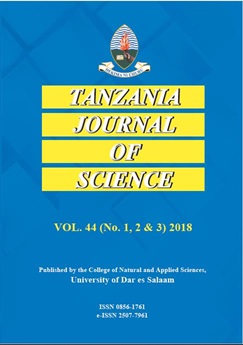Geochemical Characteristics of Soil in Relation to Occurrence of Entomopathogenic Nematodes (EPNs) in Osogbo, Osun State, Nigeria
Abstract
The occurrence and abundance of entomopathogenic nematodes (EPNs) vary across locations, and this has been attributed to many factors including soil physico-chemical properties. This study examined the influence of selected soil chemicals on the occurrence of EPNs under different cultivated lands in Osun state, Southwestern Nigeria. EPNs were isolated from 23.33% of the soil samples in selected sites using decantation and centrifugation method and nematodes observed under standard microscopy were identified based on morphological analysis of infective juveniles (IJs). This study has revealed the presence of nematodes of the families Steinernema and Heterorhabditis in the sampled soils. Soil chemical properties, including sodium (Na), carbon (C), phosphorus (P), magnesium (Mg), potassium (K), calcium (Ca), zinc (Zn), and iron (Fe) of the soil samples containing EPNs were determined following standard laboratory methods. Soil moisture contents of the sampled soils were also determined. Association of soil chemical characteristic and soil moisture content with the occurrence of EPNs was determined. There were statistically significant differences between mean soil chemical properties such as Na, C, P, Mg, K, Ca, Zn and Fe and soil chemical levels of soil samples with EPNs and soil samples without EPNs at P ‰¤ 0.05. However, soil moisture was found to significantly influence EPNs ' counts in positive soil samples. EPNs were found in soils of varying soil chemical levels, with individual species preferring a certain degree of chemicals (potassium (K) 267.83 mg, sodium (Na) 190.01 mg and iron (Fe), 155.80 mg). Soil fertility management that includes the use of fertilizers that contain the specific soil chemicals is required for occurrence of the EPNs.Downloads
Issue
Section
Articles


